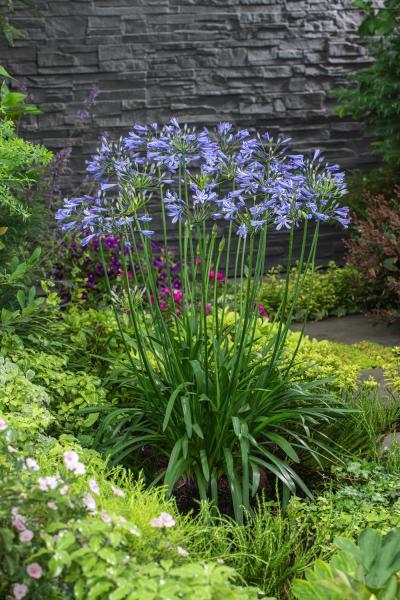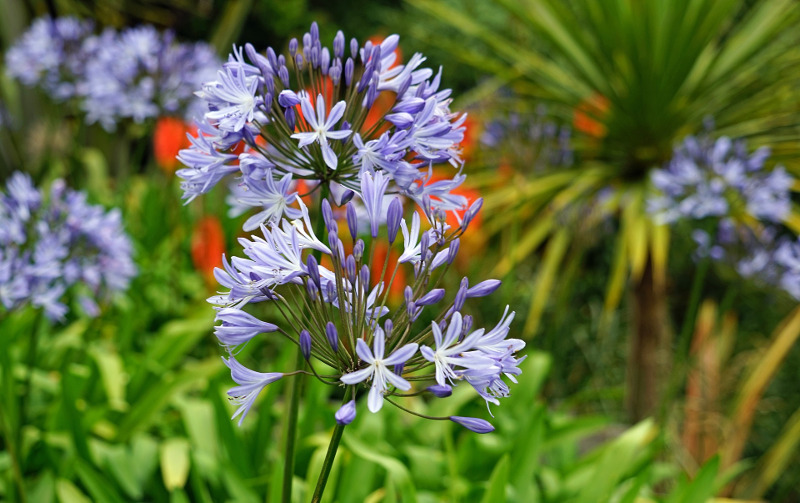Understanding the Art of Agapanthus Treatment: Important Steps for Healthy And Balanced Development and Lively Flowers
In the realm of gardening, the cultivation of agapanthus stands as a fulfilling venture for those who seek to support these sophisticated flowering plants. From picking the ideal selection to grasping pruning techniques, the trip in the direction of growing prospering agapanthus plants is complex and holds the key to unlocking the full capacity of these organic treasures.

Picking the Right Agapanthus Range

When picking the best Agapanthus variety for your garden, think about variables such as environment suitability, bloom shade, and growth behavior. Furthermore, think about the climate in your region to ensure the Agapanthus variety you pick can flourish in your details problems. Recognizing the development routine of different Agapanthus ranges is crucial for proper placement within your yard.
Ideal Planting Conditions
Thinking about the optimum environmental requirements is necessary for successful Agapanthus farming. Agapanthus plants are delicate to cool temperatures and should be protected from frost during wintertime months.
To ensure healthy and balanced development and lively flowers, plant Agapanthus bulbs at a deepness of regarding 2-4 inches and area them 8-12 inches apart. Mulching around the base of the plants helps maintain wetness and reduces weed growth.
Watering and Fertilizing Tips
Keeping correct moisture levels and supplying necessary nutrients are key components in the treatment program for Agapanthus plants. It is critical to strike a balance when it comes to watering Agapanthus. If overwatered, these plants prefer consistently wet dirt however are at risk to root rot. Throughout the growing period, water deeply once a week, making sure the dirt is well-draining to avoid waterlogging. In hotter climates or throughout durations of drought, more frequent watering might be necessary to maintain the soil evenly damp. Nonetheless, decrease watering in the winter months to avoid waterlogged conditions.
Fertilizing Agapanthus is vital for promoting healthy growth and respected blooms. Apply a balanced fertilizer, such as a 10-10-10 formula, in the very early springtime as new growth emerges. Repeat this application every 6-8 weeks throughout the growing season. Prevent too much fertilizing, as it can lead to rich vegetation at the expense of blooms. Always adhere to the maker's directions for correct dilution and application approaches. By adhering to these watering and fertilizing pointers, you can ensure your Agapanthus plants thrive and produce vivid, durable flowers.
Pruning Techniques for Agapanthus
Pruning Agapanthus plants at the ideal times and with correct methods is vital for maintaining their wellness and advertising ideal growth and blooming. The ideal time to prune Agapanthus remains in late go wintertime or early springtime prior to new development emerges. Begin by removing any type of yellowing or dead fallen leaves near the base of the plant. Cut them as close to the ground as possible without harming the emerging shoots.
Deadheading spent blossoms can additionally reroute the plant's power right into producing even more blossoms rather than establishing seeds. If you want to gather seeds for breeding, leave some blossoms to fully grown and completely dry on the plant.
Bear in mind to use tidy, sharp tools to make accurate cuts and minimize the threat of presenting diseases. their website Agapanthus. Normal trimming will certainly help maintain your Agapanthus looking healthy and cool while ensuring an abundant display screen of attractive blooms
Taking Care Of Common Insects and Illness
After ensuring proper trimming strategies for Agapanthus, it is vital to resolve usual pests and illness that can affect the wellness and vigor of these plants. Agapanthus plants are usually durable however can still succumb to particular issues. One usual insect that impacts Agapanthus is the Agapanthus gall midge. This small, orange fly lays its eggs in the foliage, causing altered development and flower buds that stop working to open up. To combat this pest, prune and damage any type of damaged plant components and think about utilizing insecticidal soap.
One more common issue is fungal fallen leave place, which presents as dark sores on the leaves. To stop fungal illness, make sure good air flow around the plants, stay clear of above watering, and eliminate any contaminated fallen leaves without delay. In addition, Agapanthus plants can struggle see it here with root rot if they are grown in improperly draining soil. To avoid this, plant Agapanthus in well-draining soil and stay clear of overwatering. By being watchful and taking prompt activity against conditions and bugs, you can assist your Agapanthus plants thrive and create lively flowers.

Conclusion
Finally, grasping the art of agapanthus care includes picking the ideal range, supplying excellent growing problems, appropriate watering and feeding, suitable trimming techniques, and attending to typical insects and diseases. By following these necessary actions, you can ensure healthy growth and lively blossoms for your agapanthus plants. Keep in mind to on a regular basis check and preserve your plants to advertise their overall health and long life.
To make sure healthy and balanced development and dynamic blooms, plant Agapanthus light bulbs at a deepness of concerning 2-4 inches and space them 8-12 inches apart. By adhering to these watering and feeding suggestions, you can guarantee your Agapanthus plants grow and generate lively, lasting blossoms.
One typical insect that impacts Agapanthus is the Agapanthus gall midge. In addition, Agapanthus plants can experience from origin rot if they are planted in badly draining pipes soil. By adhering to these necessary actions, you can ensure healthy and balanced growth and vivid flowers for your agapanthus plants.
Comments on “Agapanthus Proliferation: Tips for Expanding Your Plant Collection”